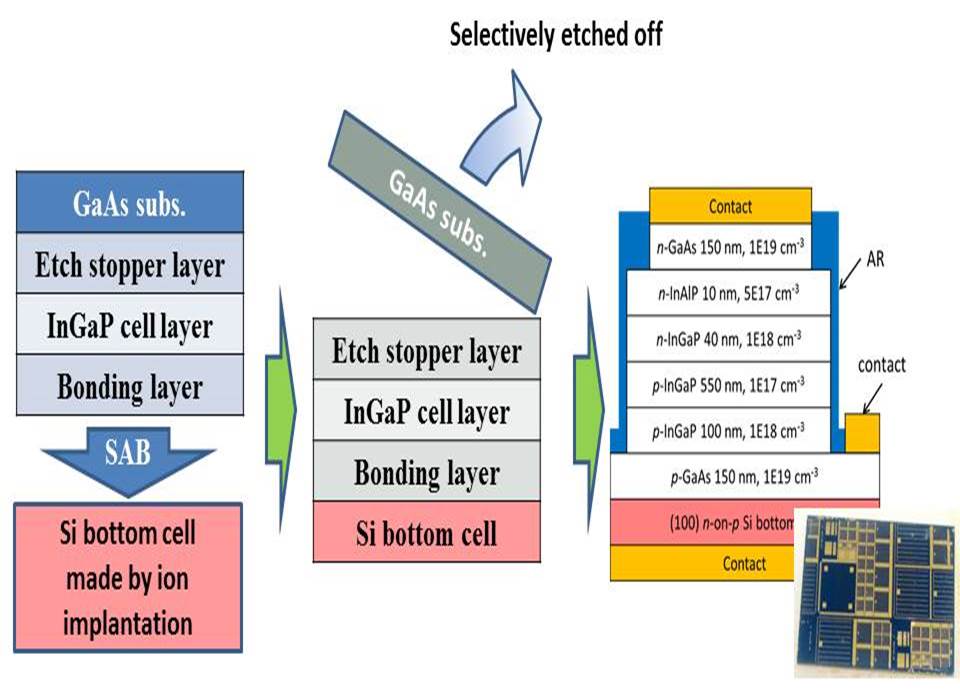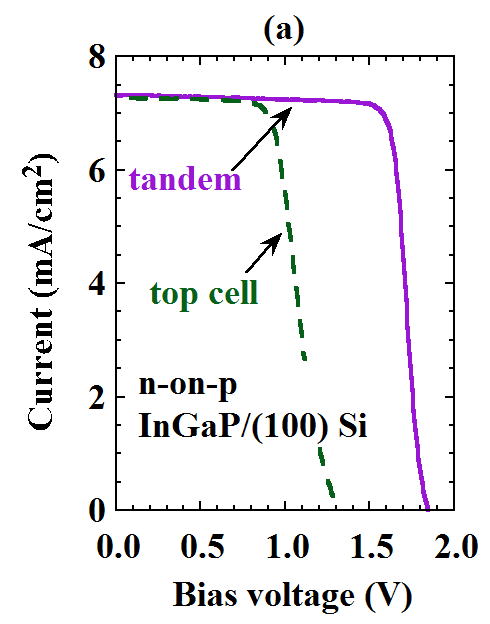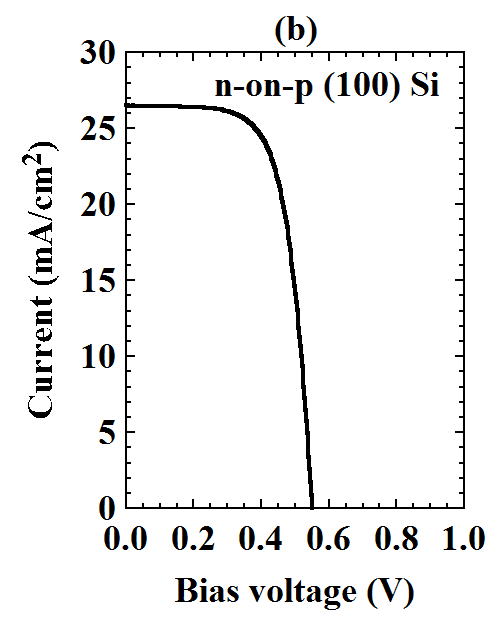Multi junction (tandem) solar cells that are made of III-V sub cells with different band gaps produce the highest conversion efficiencies among a variety of photovoltaic structures. Efficiencies greater than 40% were reported for InGaP/GaAs/InGaAs triple junction solar cells.
The tandem cells should be fabricated on Si-based bottom cells so as to deploy them in wider areas of applications since Si is the most widely employed semiconductor materials. Noting the difficulties in growing III-V layers on Si substrates, we examined the feasibility of the hybrid approach by fabricating InGaP-on-Si double junction cells.
(Result)
The top cell structures with InGaP absorption layers lattice-matched to GaAs substrates were attached to Si-based bottom cell structures by surface activated bonding (SAB). The bottom cell structures had been prepared by the ion implantation and annealing. After the top GaAs substrates were selectively etched off, double junction cells were fabricated using the conventional semiconductor device process sequence. Their performances were measured using a solar simulator under the condition of AM1.5G and one sun at room temperature.
 |
The I-V characteristics of an n-on-p InGaP-on-(100)-Si tandem cell as well as an InGaP top cell are shown in the bottom left frame. The characteristics of a (100)-Si cell are shown in the bottom right. Their open-circuit voltage (VOC) is 1.85 V (tandem configuration), 1.32 V (top cell), and 0.57 V (bottom cell). Thus VOC in the tandem configuration almost agrees with the sum of VOC's of the respective sub cells. Their efficiencies are 11.1, 6.29, and 9.92% in the tandem, top, and bottom cells, respectively. The short-circuit current (JSC) of the tandem, top, and bottom cells are 7.31, 7.26, and 26.5 mA/cm2, respectively, which means that the efficiency in the tandem operation is limited by the performance of the top cell. Higher efficiencies in the tandem configuration are assumed to be realized by revising the top cell structures.
 |
 |